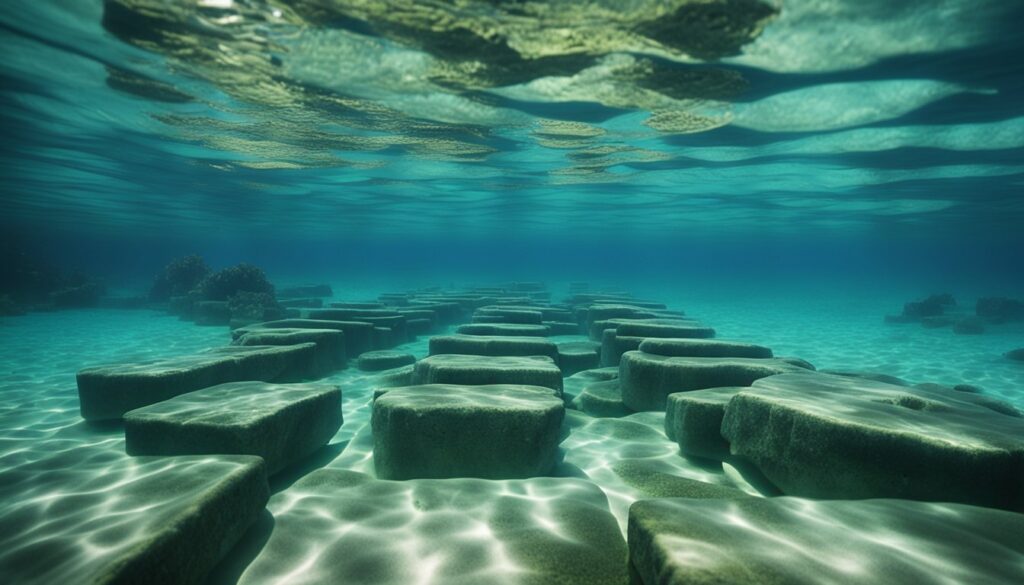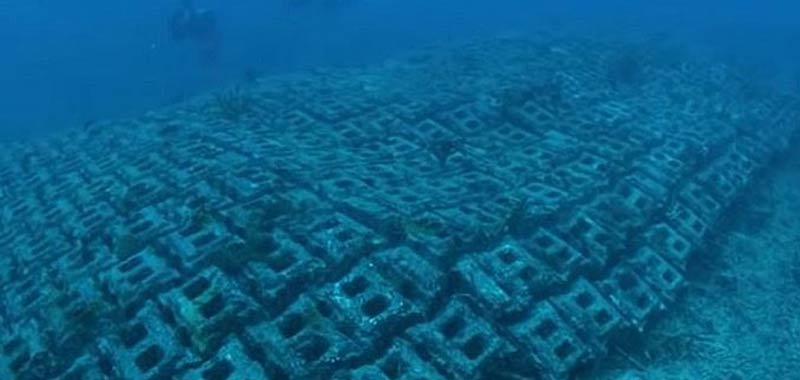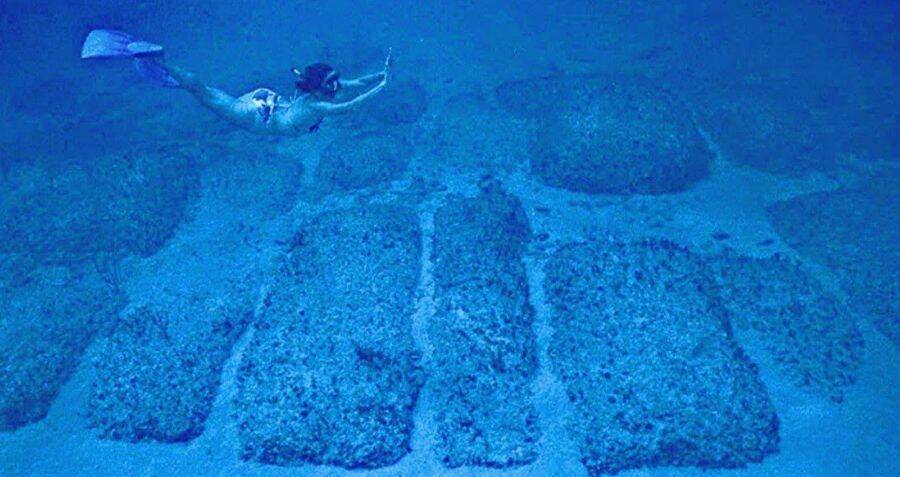THE BIMINI ROAD: EVIDENCE OF ATLANTIS?

The allure of the unknown has always drawn humanity to explore the depths of the ocean, and one of the most fascinating discoveries lies submerged off the coast of the Bahamas: the enigmatic underwater structures at Bimini. Known popularly as the “Bimini Road,” this site has sparked decades of debate, speculation, and wonder. Is it a natural geological formation, or could it be evidence of an ancient, advanced civilization?
The Discovery of the Bimini Road

The story begins in 1968 when a team of divers exploring the shallow waters off Bimini Island stumbled upon a peculiar arrangement of massive limestone blocks. The stones, mostly rectangular and polygonal in shape, are laid out in a pattern that resembles a road, wall, or pathway stretching for approximately half a mile. Their discovery coincided with a prediction by the famous psychic Edgar Cayce, who foretold that remnants of Atlantis would surface near Bimini in the late 1960s. This fueled speculation that the Bimini Road might be the remains of the fabled lost city.
What Does the Bimini Road Look Like?

The structure consists of large, flat, and roughly fitted stones that rest on the ocean floor about 15–20 feet below the surface. The blocks are remarkably uniform in size, measuring around 10 to 13 feet in length and 7 to 10 feet in width. Some sections appear to curve gently, adding to the impression of a man-made roadway. Surrounding the main formation, divers have also discovered smaller, scattered stones and fragments, which some believe might have been part of a larger complex.
Natural Formation or Human Construction?
Scientists and researchers are divided over the origins of the Bimini Road. Several theories attempt to explain its existence:
Natural Geologic Formation: Geologists argue that the Bimini Road is a natural occurrence, formed by beachrock—a type of limestone that forms in intertidal zones and fractures into rectangular blocks over time. Submerged due to rising sea levels, these formations could mimic the appearance of a constructed pathway.
Ancient Civilization: Others believe that the Bimini Road could be the remnants of a man-made structure, possibly a harbor, breakwater, or ceremonial pathway from a lost civilization. Advocates of this theory point to the uniformity of the stones, their alignment, and the apparent signs of tool marks or quarrying.
Connection to Atlantis: Perhaps the most romanticized explanation ties the Bimini Road to Atlantis, the legendary advanced civilization described by Plato. Proponents argue that the precision and scale of the structure are consistent with the technological prowess attributed to Atlanteans.
Scientific Investigations
Several expeditions have studied the Bimini Road, employing techniques like radiocarbon dating and underwater mapping. Most studies suggest that the formation is around 3,000–5,000 years old, which aligns with the time frame of early human activity in the region but also with natural geological processes. However, these findings are not definitive, and the lack of artifacts or tools associated with the structure complicates the interpretation.
Cultural and Mystical Significance
Beyond scientific inquiry, the Bimini Road holds cultural and mystical significance. It has become a pilgrimage site for those interested in ancient mysteries, alternative archaeology, and New Age spirituality. Visitors and divers often describe an inexplicable sense of awe and connection to the past when exploring the site.
The Bimini Road reminds us of how much there is yet to learn about the Earth’s history, and how the ocean still guards secrets that could rewrite our understanding of human and planetary evolution.
The truth behind the Bimini Road may never be fully uncovered, and perhaps that is part of its charm. As technology advances, future explorations may reveal new insights—but for now, this underwater enigma remains one of the most tantalizing mysteries of our time.
